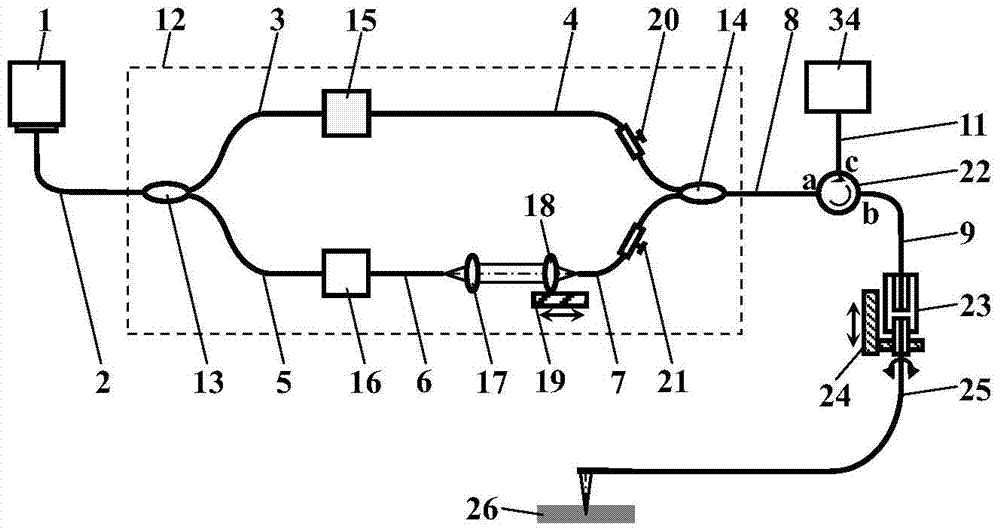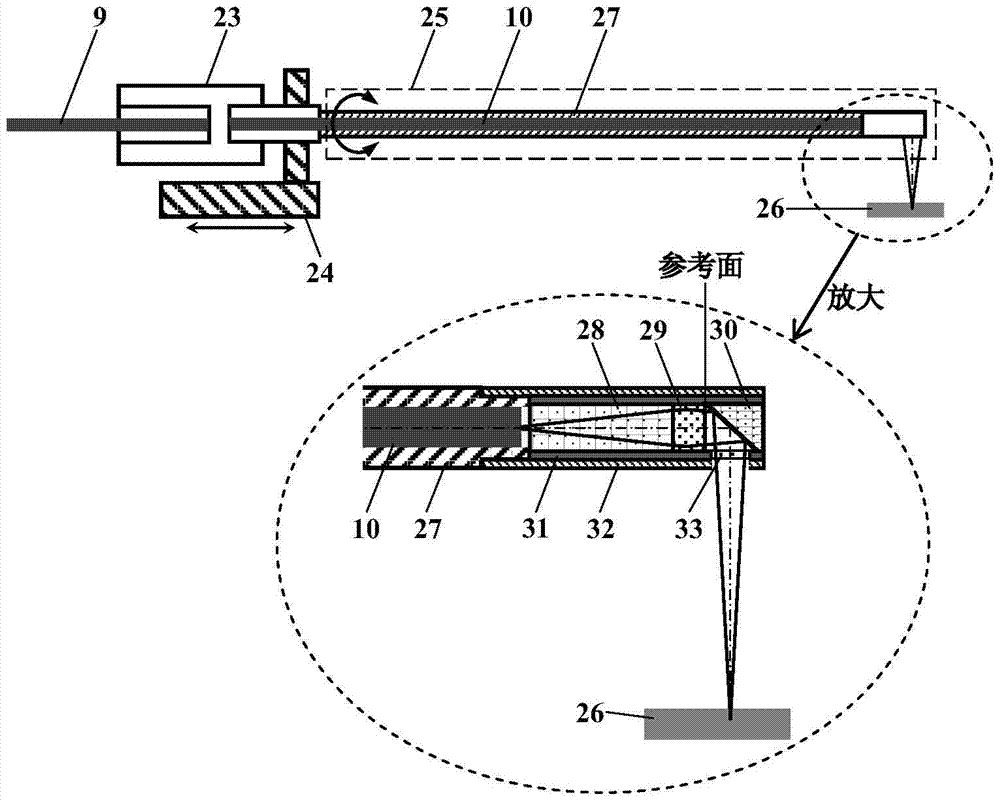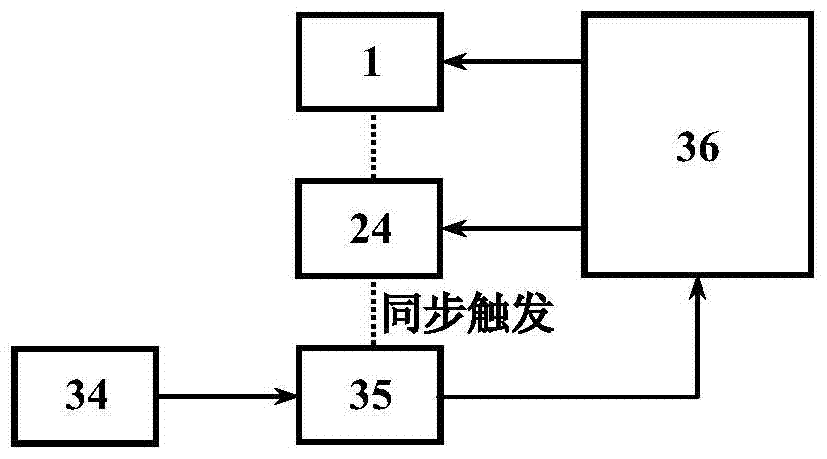Endoscopic oct imaging system using optical path difference external compensation common path interference probe
An imaging system and optical path difference technology, applied in the fields of endoscopy, application, medical science, etc., can solve the problems of difficult to enter the body, not traversal scanning imaging, difficult to practical needs, etc., to reduce the missed detection of lesions, resist the environment The effect of strong interference ability
- Summary
- Abstract
- Description
- Claims
- Application Information
AI Technical Summary
Problems solved by technology
Method used
Image
Examples
Embodiment Construction
[0031] The present invention will be further described below in conjunction with the accompanying drawings and specific embodiments.
[0032] figure 1 It is a structural schematic diagram of an endoscopic OCT imaging system using an optical path difference externally compensated common path interference probe proposed by the present invention. Including: light source 1, first to tenth single-mode optical fiber 2-11, optical path difference external compensation interferometer 12, first and second fiber coupler 13-14, first and second acousto-optic frequency shifter 15- 16. First and second lenses 17-18, translation stage 19, first and second polarization controllers 20-21, optical circulator 22, optical fiber rotary connector 23, helical scanning mechanism 24, endoscopic probe 25, metal Coil 27, glass spacer rod 28, Green lens 29, 45° cylindrical reflector 30, transparent sealing sleeve 31, metal outer sheath 32, window 33, detector 34, data acquisition card 35, and computer ...
PUM
 Login to View More
Login to View More Abstract
Description
Claims
Application Information
 Login to View More
Login to View More - R&D
- Intellectual Property
- Life Sciences
- Materials
- Tech Scout
- Unparalleled Data Quality
- Higher Quality Content
- 60% Fewer Hallucinations
Browse by: Latest US Patents, China's latest patents, Technical Efficacy Thesaurus, Application Domain, Technology Topic, Popular Technical Reports.
© 2025 PatSnap. All rights reserved.Legal|Privacy policy|Modern Slavery Act Transparency Statement|Sitemap|About US| Contact US: help@patsnap.com



